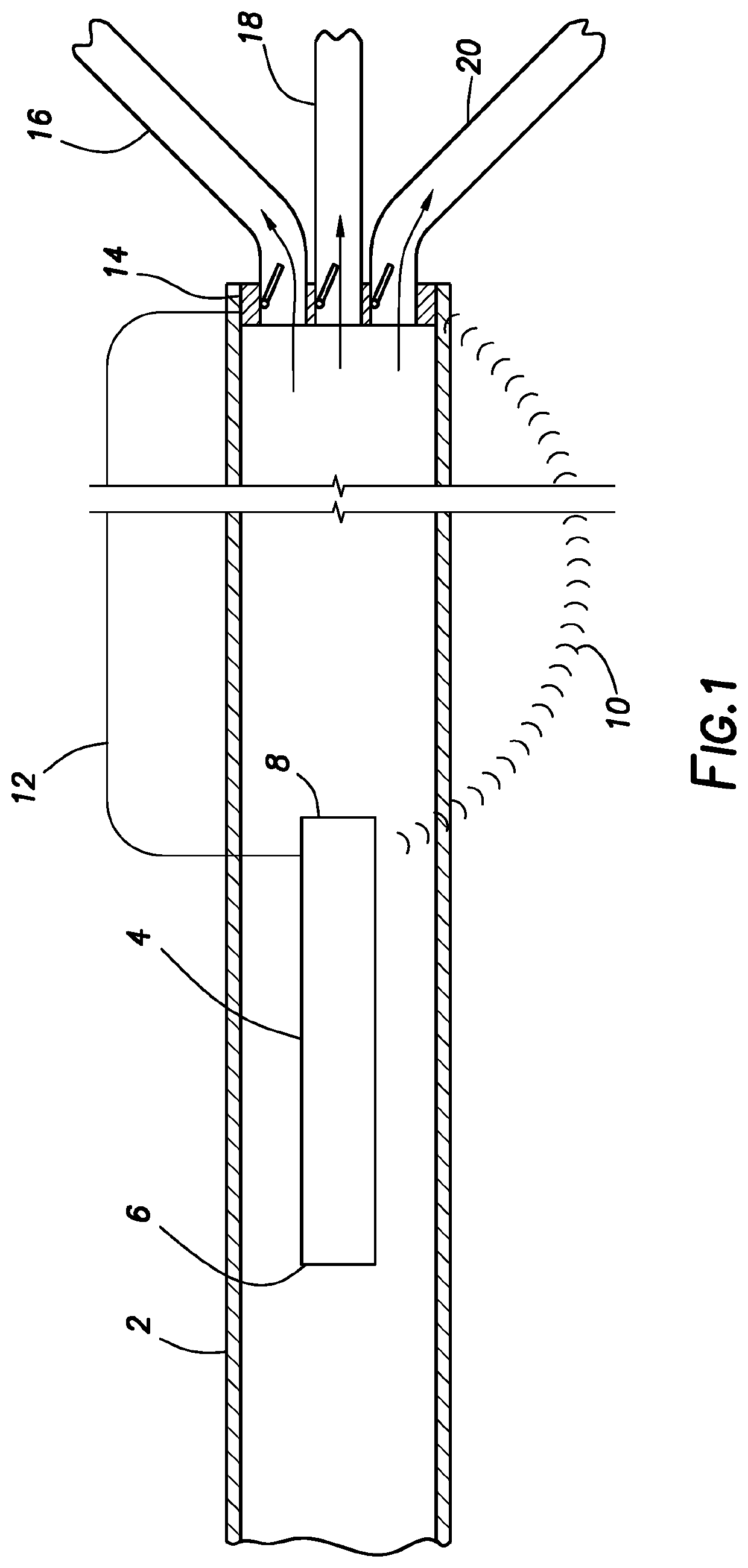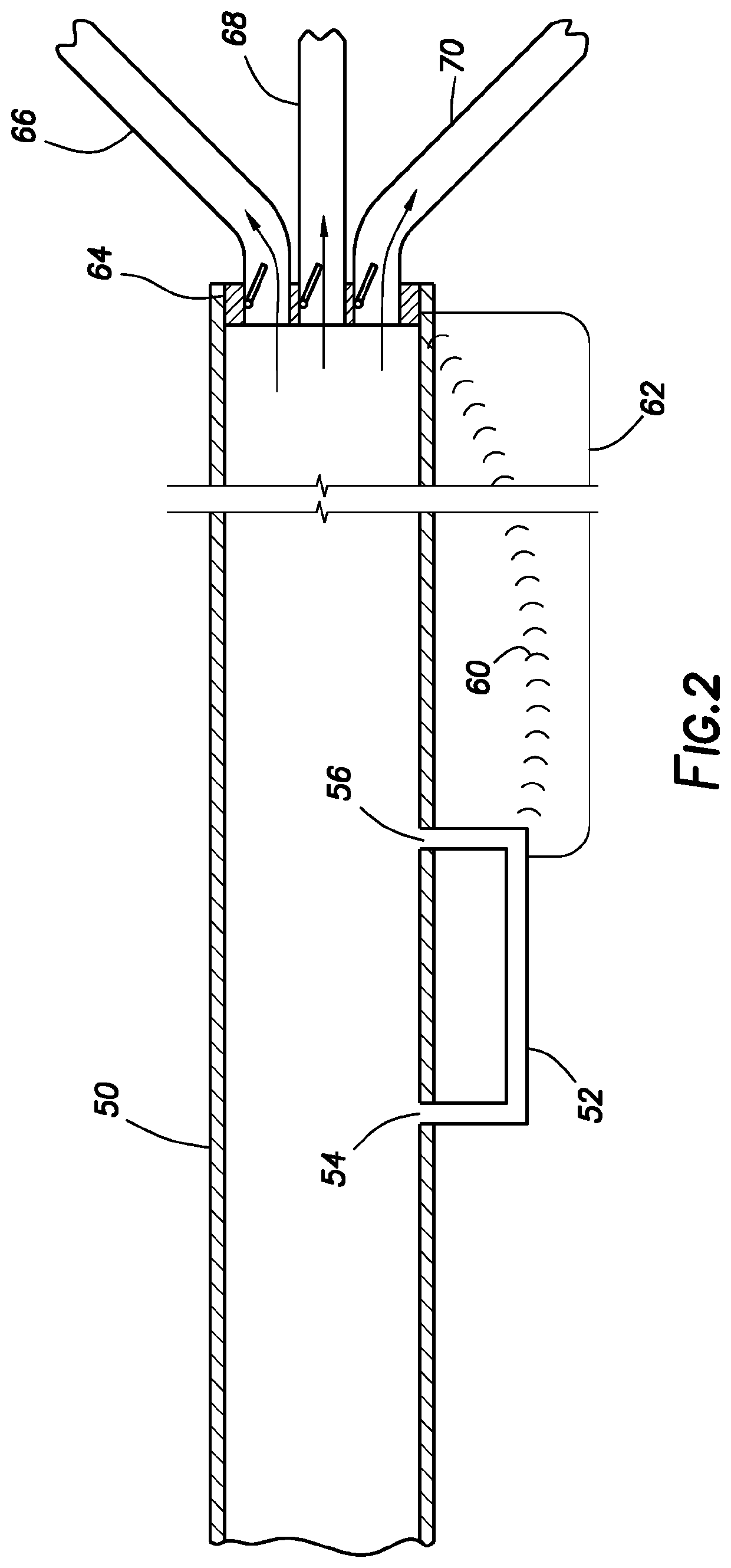Pipeline interchange/transmix
a technology of pipelines and interchanges, applied in the direction of instrumentation, programme control, optical radiation measurement, etc., can solve the problems of unsatisfactory, expensive pipeline stoppage, and extreme complexity of refineries
- Summary
- Abstract
- Description
- Claims
- Application Information
AI Technical Summary
Benefits of technology
Problems solved by technology
Method used
Image
Examples
example 1
[0137]As a first step toward training a genetic algorithm to distinguish those crude oils having the potential to foul refinery processes, 63 crude oils samples of distinct geologic origin were obtained and their fouling propensity was determined in a conventional manner using a conventional Hot Liquid Process Simulator (HPLS), prior to analyzing the samples by either near-infrared spectroscopy (NIR) or nuclear magnetic resonance spectroscopy (NMR). While an HPLS apparatus may be utilized to measure fouling thermal resistance of crude samples utilized with the present inventive processes, other conventional laboratory tests may also be utilized to measure fouling thermal resistance.
[0138]The general operational layout of a HPLS is diagramed in FIG. 16. The HPLS pumps a test liquid upward through an annular test section that contains a heated rod made of carbon steel. The heated rod is hollow, with an internally mounted control thermocouple, and the rod is electrically heated to main...
example 2
[0150]From the 63 samples comprising crude oil that were characterized for fouling characteristics in Example 1, approximately 30 aliquots comprising crude oil were chosen that were characterized as “non-fouling” (Group 1) according to the criteria described above, and approximately 30 samples were chosen that were characterized as “non-fouling” (Group 2). The samples were first analyzed by NIR to obtain spectral data comprising more than 1300 discrete digitized data points in the range from 4000 to 6000 cm−1. Measurements were carried out on an ABB Bomem FT-NIR spectrometer equipped with a deuterated triglycine sulfate (DTGS) detector. Samples were scanned in a fixed 0.5 mm cell with sapphire windows at a temperature of 90° F. (32.2° C.). The spectral resolution was 4 cm−1 and the number of sample scans and background scans was 32, respectively.
[0151]The Group 1 and Group 2 samples (described above) were also each analyzed by 1H nuclear magnetic resonance spectroscopy (NMR) to obta...
example 3
[0156]Certain embodiments utilize support vector machines rather than a genetic algorithm to recognize potential differentiating spectral features in wavelet coefficients data and classify samples comprising crude oil as either fouling or non-fouling. FIG. 18 graphically depicts the strong correlation between measured and predicted fouling potential for a variety of crude oil samples when using SVM to classify samples. The plots predicted fouling thermal resistance for a given sample (using support vector machines) versus the actual fouling thermal resistance of the aliquot measured using the HPLS method described in Example 1. The horizontal and vertical lines through the plotted area represent the threshold fouling thermal resistance that would classify a given sample as either non-fouling (Group A in figure) or fouling (Group B in the figure).
[0157]Wavelet coefficients data was first obtained from NIR spectral data (as described herein) for various training aliquots comprising ei...
PUM
| Property | Measurement | Unit |
|---|---|---|
| flash temperature | aaaaa | aaaaa |
| flash temperature | aaaaa | aaaaa |
| boiling point | aaaaa | aaaaa |
Abstract
Description
Claims
Application Information
 Login to View More
Login to View More - R&D
- Intellectual Property
- Life Sciences
- Materials
- Tech Scout
- Unparalleled Data Quality
- Higher Quality Content
- 60% Fewer Hallucinations
Browse by: Latest US Patents, China's latest patents, Technical Efficacy Thesaurus, Application Domain, Technology Topic, Popular Technical Reports.
© 2025 PatSnap. All rights reserved.Legal|Privacy policy|Modern Slavery Act Transparency Statement|Sitemap|About US| Contact US: help@patsnap.com



